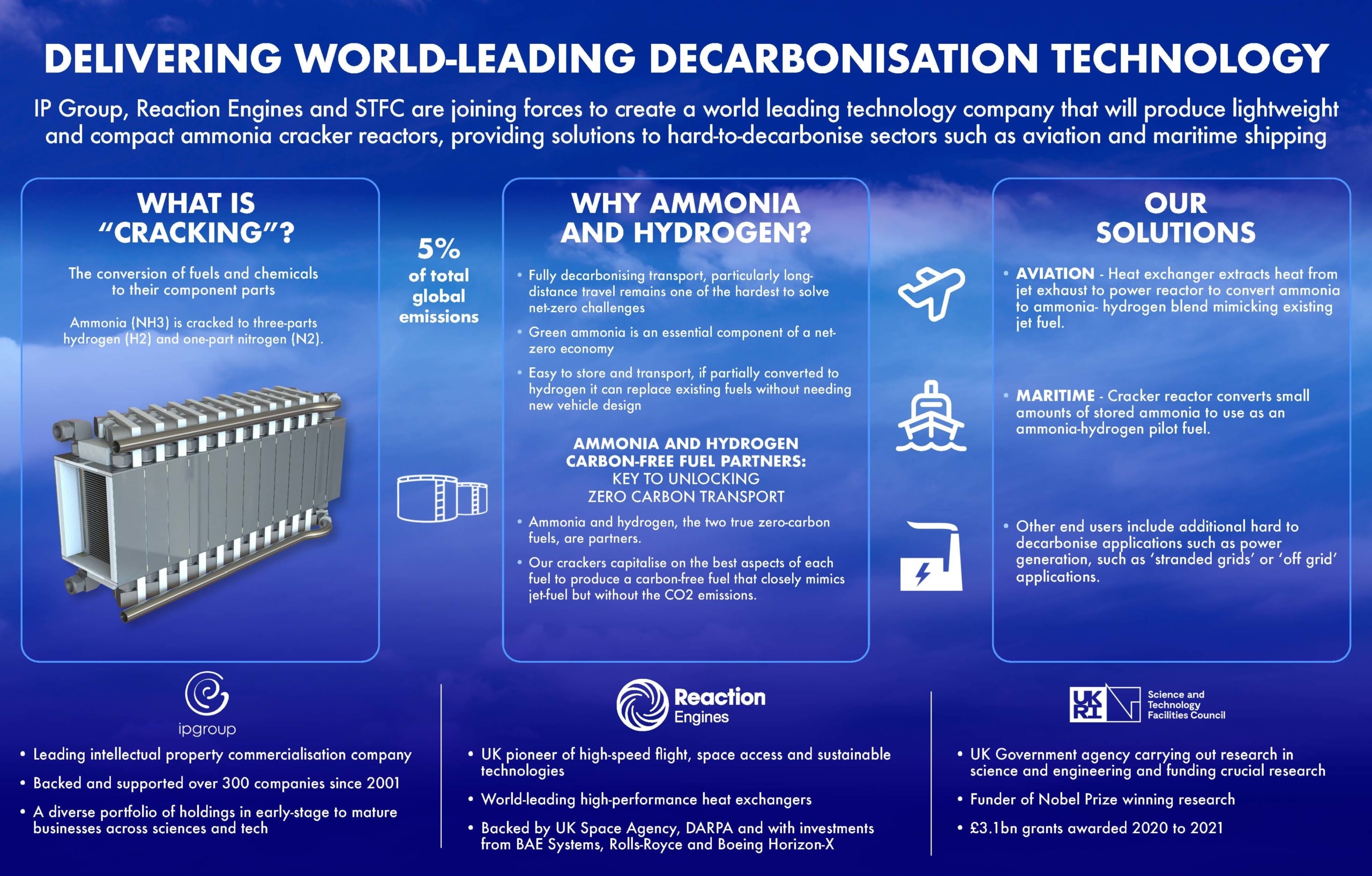
World-leading decarbonising technology for net zero transport
A new company is being formed to deliver a pioneering, world-leading decarbonising technology to sectors such as aviation and shipping.
The Science and Technology Facilities Council (STFC), investors IP Group and aerospace manufacturer Reaction Engines are joining together to create a world-leading decarbonisation technology company.
The new venture will combine Reaction Engines’ heat exchanger technology developed for rocket engines with STFC’s leading ammonia-cracker and catalysis expertise, with funding from IP Group.
The collaboration was kick-started through the Harwell EnergyTec cluster and initially funded by the STFC Cross-Cluster Proof of Concept programme. It will design and bring to market lightweight and compact cracking reactors for green ammonia, providing net zero solutions for hard-to-decarbonise sectors.
Net zero challenge in aviation
At present, aviation and shipping account for 5% of total global carbon emissions and both sectors are expected to see significant increases in carbon emissions over the coming years.
Zero-emissions aircraft and ships that emit only water vapour and nitrogen could be a reality before the end of this decade, thanks to this technology being developed by the company.
Kerosene-based jet fuel is the ideal fuel for aviation, but produces substantial carbon emissions and has no carbon-free fuel equivalents.
Alternatives pose their own challenges: for example, while ammonia has a well-established global infrastructure of storage and transportation, it is challenging to combust. Hydrogen, on the other hand, combusts very readily and storage is a challenge.
If the best fuel aspects of ammonia and hydrogen could be combined, future air travel would be entirely carbon-free.
What is ammonia cracking?
STFC’s cracker technology aims to do exactly that, mimicking jet-fuel performance and offering an affordable solution through retrofitting existing aircraft.
At the COP26 Summit in Glasgow, Reaction Engines, IP Group and STFC announced the formation of a joint venture to produce lightweight and compact ammonia cracker reactors.
The technology under development uses a heat exchanger to warm liquid ammonia as it travels to the engine, through a ‘cracking reactor’. The reactor uses a novel catalyst to partially crack the ammonia into its constituent elements, hydrogen and nitrogen.
This real-time production of a blended ammonia-hydrogen mixture results in a fuel that closely resembles the propulsion properties of jet fuel.
This fuel mix is ignited to power the engine, and when completely combusted leaves behind only nitrogen, water vapour and no particulates.
There is, however, the potential of nitrogen oxides as by-products. Although nitrogen oxide is a pollutant, even this can be removed from the exhaust through the appropriate use of a small additional amount of ammonia. The fuel could actually scrub its own emissions.
Hard-to-solve challenge
Fully decarbonising medium and long-distance flights and marine shipping remains one of the hardest to solve technological challenges as countries seek to move towards a net zero economy.
Professor Bill David FRS, STFC Senior Fellow and Professor of Energy Materials Chemistry at the University of Oxford, said:
After completing our STFC-funded proof-of-concept projects, I am excited about the impact that our technology can have in enabling low-impact transitions in hard-to-abate energy sectors.
Playing to the complementary strengths of ammonia and hydrogen, our cracker technology can rely on the global ammonia infrastructure to provide, at scale, blended ammonia-hydrogen fuels that mimic fossil fuel performance and offer affordable retrofitted energy solutions.
Dr Robert Trezona, Head of Cleantech, IP Group, said:
As the leading cleantech venture investor in the UK we are delighted to be partnering with two of the country’s most innovative organisations to pursue ammonia for energy.
The combination of technologies from Reaction Engines and STFC is a profound breakthrough, and we are excited to be joining forces to build a technology champion in this space.